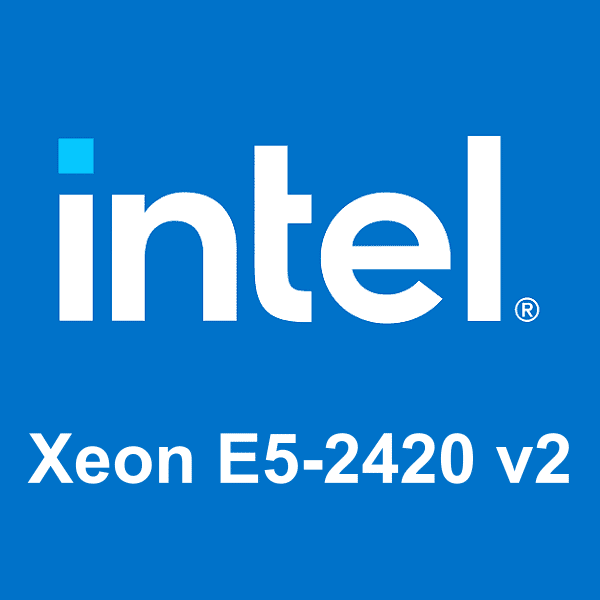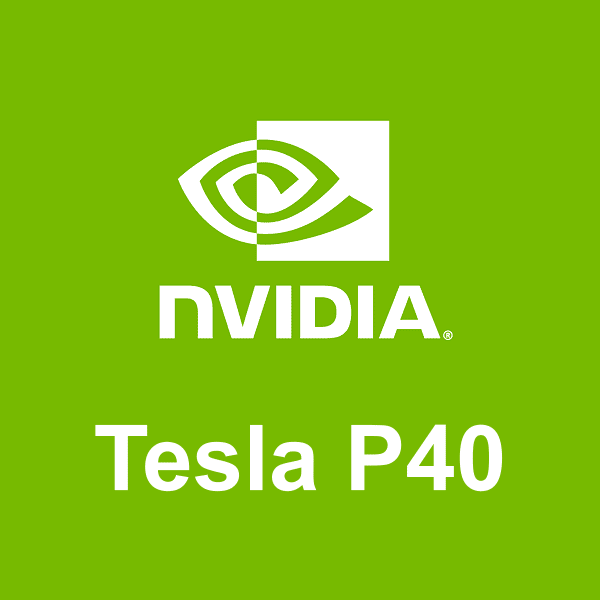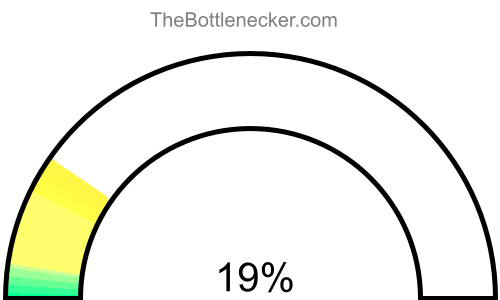Call of Duty: Ghosts bottleneck calculator
Intel Xeon E5-2420 v2 and NVIDIA Tesla P40
Call of Duty: Ghosts
6016 × 3384
1 monitor
1. Select game
Currently selected:

Call of Duty: Ghosts
2. Select processor
Currently selected:
Intel Xeon E5-2420 v2
3. Select graphic card
Currently selected:
NVIDIA Tesla P40
4. Select resolution
Currently selected:
6016 × 3384 resolution
(1 monitor)
Calculation result
Bottleneck percentage
The Intel Xeon E5-2420 v2 may serve as a bottleneck for the NVIDIA Tesla P40 in the Call of Duty: Ghosts with 6016 × 3384 and 1 monitor. Although the NVIDIA Tesla P40 is engineered to manage heavy graphical tasks, the Intel Xeon E5-2420 v2 might lack the processing power needed to fully unlock the NVIDIA Tesla P40 capabilities. This imbalance may inhibit the overall efficiency of your system, slowing down processing and possibly compromising graphical fidelity. For a more harmonious hardware setup, upgrading to a high-performing processor that can meet the demands of current software and games is advised.

In a configuration featuring the Intel Xeon E5-2420 v2 and NVIDIA Tesla P40, with a screen resolution of 6016 × 3384 and 1 monitor, the system experiences a 3.4% bottleneck for Call of Duty: Ghosts.
Processor and graphic card utilizations
In a computing setup featuring the Intel Xeon E5-2420 v2 and NVIDIA Tesla P40, under the context of Call of Duty: Ghosts with a screen resolution of 6016 × 3384 and 1 monitor, the processor is expected to have an utilization rate of 83.2%, while the graphics card is projected to be utilized at 72.8%.
It's crucial to understand that these figures signify theoretical maximums based on typical CPU-to-GPU workload distribution ratios for certain tasks or gaming experiences. Achieving these high levels of utilization in real-world settings can be a challenging endeavor.

Playability
- Playable
- Frames per second
-
A game is considered "playable" if it can consistently run at 60 FPS on high settings. This ensures a smooth and visually appealing gaming experience free from lags or stutters.
Heatmap of bottleneck
In gaming scenarios, your NVIDIA Tesla P40 might not attain its full performance potential due to a lack of optimal utilization. This happens when the Intel Xeon E5-2420 v2 fails to handle and transmit data to the NVIDIA Tesla P40 at an adequate speed. As a result, the Intel Xeon E5-2420 v2 will be operating at its maximum capacity, while the NVIDIA Tesla P40 remains underutilized.
When it comes to bottlenecks, a processor bottleneck is generally viewed as more detrimental than a graphics card bottleneck. In cases of a processor bottleneck, the Intel Xeon E5-2420 v2 capacity reaches its limits, which may adversely affect other applications running concurrently. This situation can result in diminished responsiveness and multi-tasking capabilities.
Moreover, due to the processor bottleneck, the system might not leverage the full performance capabilities of the NVIDIA Tesla P40. Consequently, there could be restrictions in graphical rendering, frame rates, and the overall gaming experience.
To visualize these bottlenecks, consider examining our heatmap. On this heatmap, the X-axis represents the CPU Score, while the Y-axis denotes the GPU Score. A quick glance at this heatmap can offer invaluable insights into potential bottlenecks within various system configurations.

By correlating your Intel Xeon E5-2420 v2 CPU Score and NVIDIA Tesla P40 GPU Score on the heatmap, you can acquire a more comprehensive understanding of how these components interact and where the bottlenecks might occur. Making well-informed hardware choices based on this heatmap analysis can lead to a more balanced and efficient computing setup for your specific needs.
General bottleneck calculations
The bottleneck calculations presented here are geared specifically towards in-game scenarios, providing valuable insights into how your hardware configuration could impact gaming performance. However, it's crucial to understand that bottlenecks can manifest in various types of tasks and applications. Below, you will find bottleneck calculations segmented into three primary categories: General Tasks, CPU Intensive Tasks, and GPU Intensive Tasks. This segmentation allows for a more nuanced understanding of how your system's components interact under different types of workloads.
General tasks bottleneck result
For general tasks that include web browsing, video streaming, office applications, and basic multitasking, the bottleneck result offers a comprehensive look at how well your CPU and GPU are balanced. If the bottleneck percentage leans heavily towards either the CPU or GPU, it might be beneficial to consider an upgrade for the more taxed component to ensure smoother system performance.
CPU intensive tasks bottleneck result
When it comes to CPU intensive tasks, such as video editing, 3D rendering, or scientific computing, the bottleneck calculation primarily focuses on whether your processor is powerful enough to handle these workloads efficiently. Here, a high bottleneck percentage for the CPU would indicate that your processor is the limiting factor, making tasks slower than they could be with a more robust CPU.
GPU intensive tasks bottleneck result
In scenarios involving GPU intensive tasks—like advanced gaming, graphical rendering, or video processing—the bottleneck calculation highlights the efficiency of your graphics card in relation to the overall system. A high bottleneck percentage on the GPU side would suggest that your graphics card is the limiting component, potentially hindering your system's ability to deliver optimal graphical performance.
Bottleneck solutions
Replace processor
When the processor becomes the system's bottleneck, upgrading it is often the most straightforward way to improve performance. Opting for a faster processor with more cores and higher clock speeds can effectively minimize or even eliminate the bottleneck, making it easier for your graphics card to perform to its maximum capability.
- Intel Core i7-8700 Full details
- AMD Ryzen 5 1600 Full details
- AMD Ryzen 5 3500 Full details
- Intel Core i7-9700E Full details
- AMD Ryzen 3 3300X Full details
- Intel Core i3-12100T Full details
- Intel Core i7-5960X Full details
- Intel Core i7-10700T Full details
- AMD Ryzen 3 PRO 5350GE Full details
- Intel Core i7-7800X Full details
- AMD Ryzen 3 5300G Full details
- Intel Core i5-10400F Full details
- Intel Core i5-10400 Full details
- AMD Ryzen 3 3100 Full details
- Intel Core i5-10600T Full details
- Intel Core i7-6850K Full details
- Intel Core i5-10505 Full details
- Intel Core i5-9600K Full details
- AMD Ryzen 3 4100 Full details
- Intel Core i5-9600KF Full details
- AMD Ryzen 3 PRO 4350G Full details
- Intel Core i7-9700T Full details
- Intel Core i7-6800K Full details
- AMD Ryzen 3 4300G Full details
- AMD Ryzen 3 PRO 4350GE Full details
- AMD Ryzen 3 4300GE Full details
- AMD Ryzen 5 PRO 1600 Full details
- Intel Xeon E5-2687W v2 Full details
- Intel Xeon E5-2667 v2 Full details
- Intel Xeon E5-2640 v4 Full details
- Intel Xeon E5-2618L v4 Full details
- Intel Xeon E5-1660 v3 Full details
- Intel Xeon E5-2667 v3 Full details
- Intel Xeon E5-2680 v2 Full details
- Intel Xeon W-2133 Full details
- Intel Xeon E5-1680 v2 Full details
- Intel Xeon W-10855M Full details
- Intel Xeon E5-2630 v4 Full details
- Intel Xeon E5-1650 v4 Full details
- Intel Xeon E5-2650L v3 Full details
- Intel Xeon E5-2650 v3 Full details
- Intel Xeon E5-2640 v3 Full details
- Intel Xeon E5-2643 v3 Full details
- Intel Xeon E5-2660 v2 Full details
- Intel Xeon E5-2658 v2 Full details
- Intel Xeon E-2126G Full details
- Intel Xeon W-2225 Full details
- Intel Xeon E5-2470 v2 Full details
- Intel Xeon E5-2643 v4 Full details
- Intel Xeon E-2226G Full details

Impact of Changing Screen Resolution
Interestingly, if you're facing a processor bottleneck, altering the screen resolution may have a counterintuitive impact. Elevating the screen resolution will primarily stress the graphics card, thereby reducing the proportion of work that the processor needs to do in certain tasks. This makes it less likely that the processor will max out, though it does not replace the benefits of a processor upgrade for a balanced system.
Read moreReplace graphic cards
If the processor is causing the bottleneck, replacing the graphic card isn't generally recommended unless you're also planning to upgrade the processor. Downgrading your graphics card to better match the processor might alleviate the bottleneck, but it often results in a decrease in overall system performance, especially in graphics-heavy tasks like gaming or 3D rendering.
- AMD Radeon Pro Vega 56 Full details
- AMD Radeon Pro WX 9100 Full details
- NVIDIA GeForce RTX 3050 Full details
- NVIDIA GeForce GTX 1660 Full details
- Intel Arc A750 Full details
- NVIDIA GeForce RTX 3050 OEM Full details
- AMD Radeon RX 5600 OEM Full details
- AMD Radeon RX 5600 Full details
- NVIDIA GeForce GTX 980 Full details
- NVIDIA RTX 500 Ada Generation Full details
- NVIDIA GeForce GTX 1650 SUPER Full details
- AMD Radeon R9 Fury X Full details
- NVIDIA GeForce GTX 1060 Full details
- AMD Radeon RX 6500 XT Full details
- AMD Radeon RX 590 Full details
- NVIDIA GeForce GTX 970 Full details
- NVIDIA GeForce GTX 780 Ti Full details
- AMD Radeon R9 Fury Full details
- AMD Radeon RX 5500 XT Full details
- AMD Radeon R9 390X Full details
- NVIDIA GeForce GTX TITAN Black Full details
- NVIDIA GeForce GTX TITAN Z Full details
- AMD Radeon Pro W5500 Full details
- AMD Radeon RX 580 Full details
- AMD Radeon R9 390 Full details
- AMD Radeon RX590 GME Full details
- AMD Radeon R9 295X2 Full details
- AMD Radeon RX 480 Full details
- AMD Radeon RX 5500 Full details
- AMD Radeon R9 290 Full details
- AMD Radeon R9 290X Full details
- NVIDIA GeForce GTX Titan Full details
- NVIDIA GeForce GTX 1650 Full details
- AMD Radeon RX 570 Full details
- AMD Radeon RX 470 Full details
- AMD Radeon Pro Duo Full details
- NVIDIA GeForce GTX 780 Full details
- NVIDIA Quadro P5000 Full details
- NVIDIA Quadro M6000 Full details
- AMD Radeon Pro Vega 48 Full details
- NVIDIA Quadro P4200 (Max-Q Design) Full details
- NVIDIA Quadro P4000 Full details
- NVIDIA Quadro P4200 Full details
- NVIDIA Quadro P2200 Full details
- NVIDIA Quadro M5000 Full details
- AMD Radeon Pro 5500 XT Full details
- AMD Radeon PRO W6400 Full details
- NVIDIA Quadro K6000 Full details
- AMD FirePro W9100 Full details
- AMD Radeon Pro WX 7100 Full details

Impact of Changing Screen Resolution
Increasing the screen resolution in this case will demand more from your graphics card and can make the processor's bottleneck less noticeable in some scenarios, but again, it won't entirely solve the underlying problem.
Read moreBottleneck calculator types
Select purpose bottleneck calculator
Before selecting a bottleneck calculator, consider your primary computing tasks. For general activities like web browsing and office work, the calculator evaluates the balance between your CPU and GPU. If you focus on CPU-intensive tasks like video editing or 3D rendering, the tool will highlight processor performance. For GPU-centric tasks such as gaming or graphical rendering, it will assess the efficiency of your graphics card. Choose the appropriate calculator to accurately identify potential system bottlenecks for your specific use-case.
Select game bottleneck calculator
By selecting a game from the list, the calculator will analyze potential bottlenecks specifically tailored to that game's system requirements and graphical demands. This allows you to optimize your setup for a smoother, more responsive gaming experience. Choose the game that aligns with your interests to get the relevant bottleneck analysis.








































